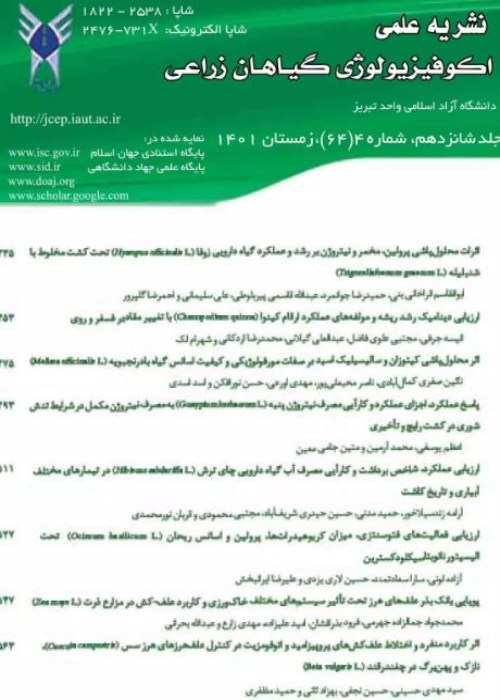Agronomic and Economic Evaluation of Safflower (Carthamus tinctorius L.) and Chickpea (Cicer arietinium L.) Intercropping under Micronutrient Applications
Today, intercropping as a key strategy of sustainable agriculture, is appreciated by both researchers and farmers in increasing efficiency of environmental resourceing uses, reduce damages due to environmental stresses, and improve the farm income. To this end, a split plot experiment based on a randomized complete blocks design with three replications was conducted at the Research Farm of Gonabad University.Main factor, comprised of 25% safflower + 75% chickpea, 50% safflower + 50% chickpea, 75% safflower + 25% chickpea, and 100% safflower + 100% chickpea intercropping patterns, and sole cropping of the two plants. Subfactors consisted of control (without foliar spray) and foliar spraying of 3 g.lit-1 Fe and Zn. The research results showed that the highest values of branches number (10.5) and head number per plant (22.5) of safflower were achieved from 25% safflower + 75% chickpea and 50% safflower + 50% chickpea intercropping, respectively and the highest seed yield (2070 kg.ha-1) from sole cropping. The branch and head number per plant, 1000-seed weight, and seed yield of safflower were increased significantly due to micronutrient foliar application as compared with control. The plant height (26.4 cm) and seed yield (1739 kg.ha-1) of chickpea showed the highest value in sole cropping while the highest values of pod number per plant (31.9) and seed number per plant (22.2) were obtained from 25% safflower + 75% chickpea intercropping. Micronutrients foliar application improved plant height, pod number per plant, pod length, and seed number per plant of chickpea. The land equivalent ratio values ranged from 1.12 to 1.52. The changes in water use efficiency indices were also higher in all intercropping patterns compared with sole cropping, and the highest value (1.31) was achieved from 75% safflower + 25% chickpea intercropping treatment. The aggressivity index indicated the dominance of safflower over chickpea. All of the intercropping treatments, except for 100% safflower + 100% chickpea pattern, showed real yield increase. The highest value of intercropping advantage (0.51) was obtained from 25% safflower + 75% chickpea treatment while the monetary advantage index (26454751) and the relative total value (1.44) were higher in 100% safflower + 100% chickpea intercropping as compared to the other cropping patterns.
- حق عضویت دریافتی صرف حمایت از نشریات عضو و نگهداری، تکمیل و توسعه مگیران میشود.
- پرداخت حق اشتراک و دانلود مقالات اجازه بازنشر آن در سایر رسانههای چاپی و دیجیتال را به کاربر نمیدهد.


